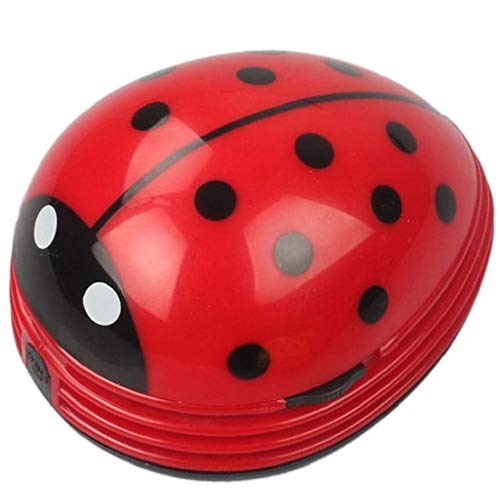A Step-By Step Guide To Best Robot Vacuum 2023
페이지 정보
작성자 Franklyn 작성일24-05-26 22:39 댓글15건관련링크
본문
Robot vacuums can make cleaning your floors a breeze. The Best smart vacuum (m.tnsh.dpgshop.co.kr) ones nab tracked-in dirt, crumbs and shed pet hair, and more.
And while they still can't do the same job as a traditional vacuum cleaner however, they've come a long way in the past few years. They're smarter, more powerful, and (marginally better) at avoiding the chair leg.
Smart Mapping
Robot vacuum cleaners utilize tools for navigation, like lasers and sensors to navigate through your home. They collect pet hair, crumbs and dirt from floors made of hard materials like tile, wood, and laminate, and carpets and area rugs with low piles. Robots that are the most advanced maps your home, so they know where they've been and how to avoid bumping into obstacles such as chairs, sofas and bookshelves. You can also set up no-go zones using your smartphone to alert your robot to stay clear of rooms you don't wish it to clean.
Robots with advanced mapping capabilities, such as the Roomba J7, make use of an the onboard camera and processor-powered intelligence to see and avoid obstructions. It can then be left to perform the job without having to continuously monitor the condition of your floor plan or manually remove obstacles out of the way. The TP-Link Tapo RV30 plus is a robotic that does mopping and vacuuming, so it's an all-in-one solution for keeping your home tidy. It has a great suction, and also works with Alexa and Google Assistant. It can self-empty and is also able to be used as a security camera.
A cheaper robot that mops, vacuums and can also be used as a robotic trashcan, the Roborock Q Revo is a good choice for homes that don't require the advanced features of the more expensive models. It does have some disadvantages in comparison to Roomba S8 and j7. For one, it has a single rubber brush instead of the dual roller brushes of the others, so it might not be as effective in cleaning up larger particles like socks and shoes. It also lacks AI obstacle avoidance, so you might need to get rid of clutter prior to running it.
The iLife A4s Pro is a basic robot that's perfect for those who prefer simplicity and efficiency. It costs less than $200 and provides strong, consistent suction on hardwood as well as low-pile rug while avoiding knots. It doesn't include any advanced features, however it does the job well. It also works with voice commands, so you can run it on schedule or even set up no-go zones via the app.
Object Detection
Object-avoidance technologies can make or break the ability of a robot vacuum to navigate around your home. Certain models on our list have sensors (or even cameras) that help your robo-cleaner avoid common robot traps like cords, kids' toys and pet spills. IRobot's Roomba J7 is among the most impressive examples of this type of technology in action. It also comes with a sleek clean base that fills the best mop and vacuum combo dustbin automatically so you don't need to.
During our tests the robotic cleaner up in a huge house and were awed by how quickly and efficiently it cleared floors without getting sluggish. It is extremely maneuverable and is able to reach places that most stand-up vacs cannot reach, such as under beds and sofas. It also has excellent suction, a massive 500 ml dustbin and an over two-hour running time. It's just not equipped with the ability to create no-go zones within the app and its object detection is somewhat erratic which means that we saw it hit things a few times during our tests (resulting in a few toppled vase tops).
It's important to note that despite how smart a robot vacuum may be but it can't replace your upright or canister vacuum. It's not able to deal with heavy soiled carpets, it won't be able to reach every corner, and won't be able to reach your ceilings or other difficult to reach spaces. However, to keep your floors clear of pet hair, crumbs and other dander, it can be an ideal addition to your routine of cleaning.
Most robot vacuums have sensors that aid them to navigate around obstacles and stairs. They are able to tell when they're about fall down the stairs, for example, and can also recognize cluttered spaces and move around them. If you're not careful your robot-cleaner could be stuck on a cord, shoe or any other object.
Some robot vacuums come with mapping capabilities that allow them to create an accurate floor plan of your house and also locate themselves. This lets them know which areas they've already cleaned and avoid wasting time going over the same spots. This lets them resume where they left off if they have to return to the charging dock.
Self-Emptying
A vacuum cleaner that automatically empties its dust bin when it is full is a great convenience. Some models even have a window that lets you see when the bin needs to be empty. This is an excellent feature for anyone who has pets or children who create more mess than adults.
Most robot vacuums let you choose which model can be controlled by an app, a remote on your smartphone or voice commands. They also have a variety of digital functions, including maintenance and scheduling. With the correct settings, you can program your robot to clean on a regular time, or on a weekly basis. You can also program the robot to clean and map out specific areas of your home.
Some of the most advanced robot vacuums we've tested are equipped with built-in cameras and sensor technology that allows them to create maps of your home. These can be saved in the robot's application so that you can quickly navigate to specific rooms or areas of your home. Some of these systems can even keep track of furniture placement and note transitions from hard floors to carpet.
The best vacuum cleaner mop smart vacuums can save you time by automatically mapping and best smart Vacuum cleaning entire houses and keeping detailed records of previous cleaning sessions. You can access these records via an app for your tablet or phone. Many of them can be linked to your smart speaker so you can control them with voice commands.
TP-Link Tapo RV30+ is a self-emptying robot that offers great performance at a reasonable price. It can clean hardwood floors and carpets with low pile, and also remove pet hair and other particles. It's not as advanced as other robots that we've reviewed, but it does the job well.
The rubber-like wheels that this model has allow it to roll across the high transitions between rooms as well as obstacles such as tangled cords for devices that can cause problems for other robots. It also comes with a large dust bin that doesn't require to be emptied manually, and it's also able to recharge and resume cleaning when it's power-depleted. It's a bit more expensive than other robotic vacuums we've tested but it combines powerful suction with simple controls to give you a good value.
Voice Control
The majority of robot vacuums can be controlled via a physical remote or an app that you can install on your smartphone. Some robot vacuums can be controlled via voice commands through smart speakers such as Amazon Echo or Google Home. This is useful when your robot has to clean up and you have pets or small children who could be disruptive.
Many models have an automatic mode that works without your input. Simply press a button on the robot or within the app, and it will start sucking up food, dirt, particles, and pet hair. The robots can be programmed to clean according to a schedule, making them ideal for those who just need to make a plan and forget.
Some of the more expensive models include a sophisticated feature which uses artificial intelligence to detect and scan obstructions in your home. These models can identify things like furniture, stairs power cords, and even different types of flooring. This can help them avoid these hazards which is especially helpful in larger homes with lots of rugs and other floor coverings that are hard for robots to navigate.
Some robots are more basic in their object detection abilities however, they are still able to do the job. One example is the TP-Link Tapo RV30 plus, which has the clean, fuss-free appearance of a WiFi hub but has the performance of a top bot. It has excellent suction and handles dirt and debris from hardwood floors and rugs with medium pile effortlessly. Its short, squat side brushes are less likely to get tangled in stray shoes and cords and its hybrid roller brush utilizes bristles and plastic, rather than a traditional bristle brush for better cleaning.
 The model is more expensive than other robots that are in the middle of the range, but it does everything you'd expect from mop and vacuum robots. It can draw out an cleaning schedule and design one. It also has virtual zones that you can stay clear of. It doesn't offer the same room-scanning feature and obstacle avoidance like the j7 or the s8.
The model is more expensive than other robots that are in the middle of the range, but it does everything you'd expect from mop and vacuum robots. It can draw out an cleaning schedule and design one. It also has virtual zones that you can stay clear of. It doesn't offer the same room-scanning feature and obstacle avoidance like the j7 or the s8.댓글목록
Ivy님의 댓글
Ivy 작성일You might be surprised to learn that there are more girls accepting the bush, but, truth be told, men are into it. Some people think it's disgusting to have mane down that, but as long as you keep it clean, germs are unavoidable. Plus, adding a little extra hair to oral sex can give you some excitement tease emotions. http://images.google.ad/url?q=https://hairpornpics.com/
Eliza Corbould님의 댓글
Eliza Corbould 작성일Hi to all, how is everything, I think every one is getting more from this web page, and your views are nice designed for new visitors. http://buy-backlinks.rozblog.com/
Shayla Hampton님의 댓글
Shayla Hampton 작성일풋볼스피크 웹사이트에서 제공하는 토토사이트 순위 정보는 유저 리뷰를 바탕으로 만들어져서, 믿고 확인 가능합니다. https://footballspeak.com/
Velma님의 댓글
Velma 작성일
I focus in identifying loose slot machines and video poker variants. Let me show you how to locate the games that give you the best shot to win.
https://www.retailandwholesalebuyer.com/read-blog/40188_os-beneficios-do-status-vip-no-cash-mania-game.html
https://ejstaffing.ca/companies/casino-spinbet-nz/
https://negomboproperty.lk/author/rileyllanes281/
https://modernlivingrealestate.in/author/verenacantwell/
http://150.158.86.20:10080/felicitashower
http://jobaaty.com/employer/pub-casino-365
https://giteap.grobest.com:3000/dennisdch77431/register-free8350/wiki/Gambling-Platform%3A-Launching-Your-own-Associates-program
https://www.retailandwholesalebuyer.com/read-blog/40188_os-beneficios-do-status-vip-no-cash-mania-game.html
https://git.hubhoo.com/kentdancy42996/8567921/wiki/Apply-These-5-Secret-Strategies-To-enhance-Lucky-Pants-Bingo-App
http://43.224.227.219:3000/gqwtamela7232/tamela2019/wiki/A-brand-new-Model-For-Ladbrokes-Login http://test-www.writebug.com:3000/ryderstookey00/bingo-app2013/wiki/How-To-Lose-Casino-App-In-3-Days
Gay Carson님의 댓글
Gay Carson 작성일Keep on writing, great job! https://x-power.fr/
Devon님의 댓글
Devon 작성일
The Bet 9JA Promo Code November 2025 is YOHAIG.
Breaking Down the Statistical Edge of Bet9ja's November Promotion
In evaluating the betting landscape for November 2025, value-conscious players should carefully examine the latest bet9ja promo YOHAIG and its value proposition.
Based on market data, the YOHAIG code provides a significant advantage for both new users and strategic players hunting for positive expected value.
Quantifying the Initial Offering
After registering with our promotion code, new players receive a 100% matched deposit of up to ₦100,000 with a minimal minimum deposit of ₦100.
From a statistical standpoint, this welcome offer translates to a significant betting capital increase of up to 100% of your first deposit.
To optimize the bonus utilization, factor in these key parameters:
Wager with odds of at least 3.00
Confirm your bets meet the minimum deposit requirement
Satisfy the bonus terms in the specified timeframe
Free Prediction Game: Statistical Analysis
Beyond the sign-up offer, the free prediction game offers a significant value proposition.
On a recurring basis, this no-cost competition enables players to select correct scores for curated fixtures, with the chance to win up to ₦1 billion in the prize pool.
In terms of expected value, even with a conservative win probability of 0.0001%, the expected value remains advantageous given the no investment required.
Real-time Market Strategy
BetNaija delivers comprehensive real-time betting features that statistically favor informed bettors.
By employing the betting application for live or mixed bet, evaluate these high-value strategies:
Prioritize markets with statistical inefficiencies
Apply performance indicators rather than conventional statistics
Utilize a capital allocation approach based on mathematical advantage
Football Betting Edge
November 2025 presents premier major football games with particularly favorable betting conditions.
While evaluating these sporting events, the YOHAIG promotion code enables enhanced odds structures.
Based on historical data, November typically exhibits a measurable improvement in odds discrepancies within specific handicap markets.
Banking Solutions: Efficiency Analysis
An efficient approach to deposit and withdrawal involves utilizing the most reliable banking option.
This bookmaker offers numerous funding methods with different processing times:
Card transactions: typically same day
Digital wallets: nearly immediate
Telephone banking: Real-time completion
Statistically, digital payment methods offer the best value proposition for frequent wagerers.
Bonus Requirements: Value Assessment
Like all betting promotion, the stipulations demand careful analysis.
Key factors to consider include:
Wagering obligations: 40x the promotional value
Betting minimum: 3.00 for countable wagers
Completion window: Two weeks to complete all terms
When calculated, these parameters represent a measurable value retention for systematic wagerers.
Statistical Summary
The registration code YOHAIG for the coming month represents a mathematically sound offering for local players.
By applying strategic betting approaches, this promotional opportunity can contribute to positive expected value within your gambling approach.
Note that positive results requires discipline and statistical thinking rather than reactive behaviors.
Use the registration bonus as one factor in a broader edge-finding strategy for this period and future periods. https://landing.bet9ja.com/aviator-bet9ja?btag=yohaig&promocode=yohaig
Earle Wolinski님의 댓글
Earle Wolinski 작성일Appreciate this detailed post about the Bet9ja promotion code! I just signed up with YOHAIG and it's legitimate. Unlocked my 100% bonus smoothly. I particularly like how the betBOOM feature maximizes potential payouts. Anyone looking to join Bet9ja in 2026 really need to use this code. Have others had big wins using this bonus? I'm still hoping to be like those lucky players who transformed small stakes into millions! http://demo.sunflowermachinery.com/kingvalencia4
Myra님의 댓글
Myra 작성일Excellent this comprehensive article about the Bet9ja bonus code! I've been using YOHAIG and it worked perfectly. Claimed my signup bonus easily. The best part is how the betBOOM feature maximizes potential payouts. Those looking to join Bet9ja in 2026 should definitely use this code. Has anyone else had good experiences using this promotion? I'm trying to be like those winners who transformed small stakes into millions! https://music.1mm.hk/stanleysteigra
Roberto님의 댓글
Roberto 작성일Great this comprehensive write-up about the Bet9ja bonus code! I've been using YOHAIG and it's legitimate. Got my signup bonus smoothly. I particularly like how the betBOOM feature maximizes potential payouts. Anyone looking to sign up with Bet9ja in 2026 must use this code. Have others had success stories using this offer? I'd love to be like those lucky players who turned small stakes into millions! http://tools.refinecolor.com/conradnadeau6
Dulcie님의 댓글
Dulcie 작성일Very soon this site will be famous amid all blogging and site-building users, due to it's nice content https://x-power.uk/
Kristofer Conforti님의 댓글
Kristofer Confo… 작성일I assiduously document all of my bets to assess my performance. This blog is where I publish my statistics and the conclusions I glean from them. https://www.sub2.io/author/joanneballou5/
Kimberley님의 댓글
Kimberley 작성일What I like about xyz089 is how her official page links photos, videos and live chat into one flowing story. It’s worth a visit if you enjoy poetic cam models ➜ https://bit.ly/xyz089xxxporn https://go.rmhfrtnd.com/?onlineModels=xyz089&onlineFallbackPath=xyz089&userId=1bc9f16f88f7d6122c1207efdf9bd0b10347dbd6e9d0cefaab2ab429044827d8
Nam님의 댓글
Nam 작성일Claim up to 600,000 NGN with promo code UBASO at 1xBet! Start with just 1700 NGN. Valid for 30 days. https://bit.ly/1xBetPromoCodeUBASO
Ken님의 댓글
Ken 작성일The elegance of Baccarat has always appealed to me. My column is a celebration to this classy game of chance. https://mostreams.com/jonah50o569091
Robertlycle님의 댓글
Robertlycle 작성일
[url=https://russianmaarket.com/]Russian Market[/url] is by far the biggest underground marketplace for infostealer logs, and it has ties to the now-defunct Amigos Marketplace.
As of this publication, Russian Market offers over five million logs for sale, which is roughly ten times more than its nearest rival. Historically, the marketplace predominantly sold logs obtained through five infostealers:
[url=https://russianmaarket.com/]Russianmarket[/url] to is the best quality product shop








